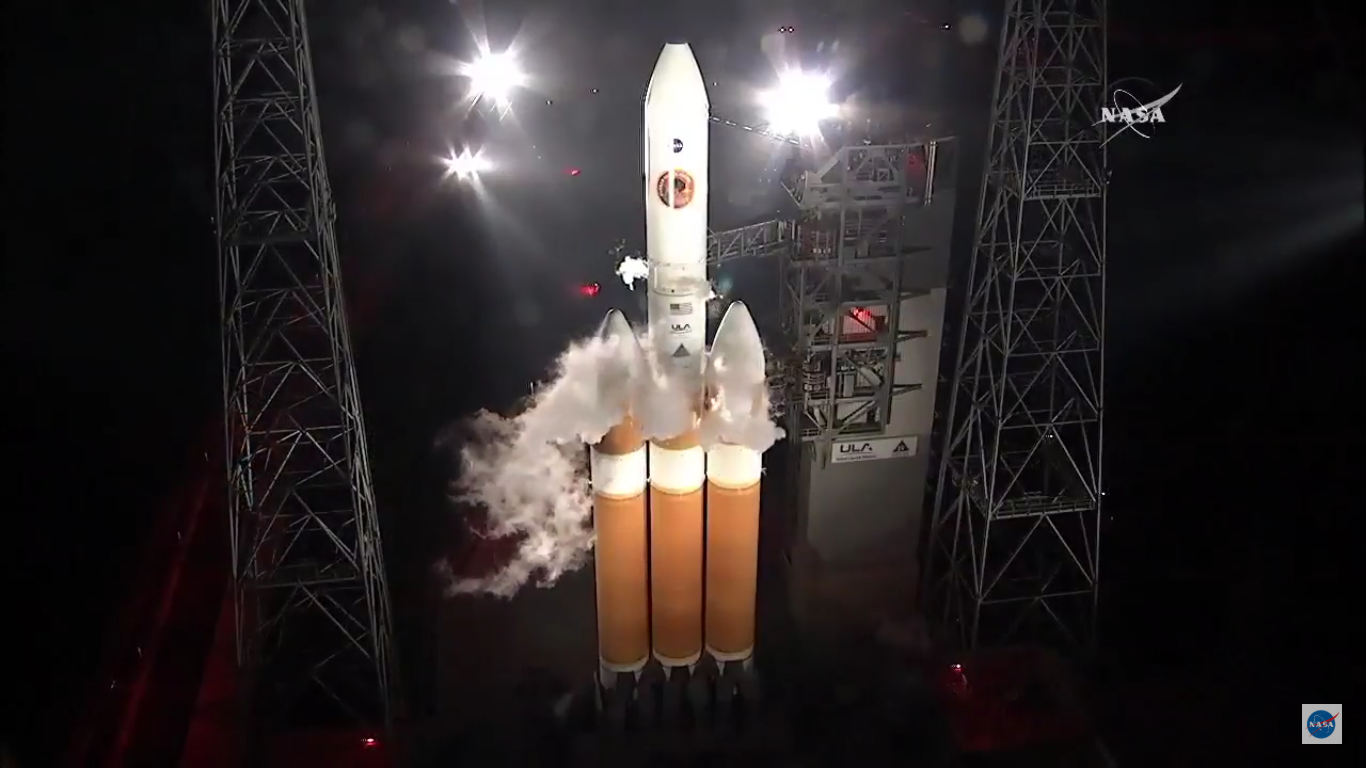Last-Minute Glitch Delays Launch of NASA's Parker Solar Probe

NASA called off the launch of its ambitious Parker Solar Probe mission to the sun just minutes before an early-morning liftoff Saturday (Aug. 11) due to a glitch with the spacecraft's giant Delta IV Heavy rocket.
The space agency scrubbed the launch due to a last-minute anomaly in the United Launch Alliance Delta IV Heavy rocket sheduled to launch the Parker Solar Probe at 4:28 a.m. EDT (0828 GMT), NASA officials said. The mission is now scheduled for no earlier than Sunday, Aug. 12, at 3:31 a.m. EDT (0731 GMT) during a window that will remain open for 65 minutes. There is a 60-percent chance of good weather for a Sunday launch, according to ULA.
You can watch the launch live on Space.com, courtesy of NASA TV. The webcast will begin at 3 a.m. EDT (0700 GMT). [NASA's Parker Solar Probe Mission to the Sun in Pictures]
"The team received a gaseous helium red pressure alarm that kicked them out," Mic Woltman of NASA's Launch Services Program said during live NASA TV commentary following the launch scrub. "The team is evaluating that and looking at it."
Woltman added that the team is hoping for a 24-hour turnaround. "That is contingent on the detanking process," he added, referring to the procedure that will address the helium pressure anomaly. If the process doesn't go smoothly, the team will be looking at a 48-hour turnaround and launching early on Aug. 13.
NASA's $1.5 billion Parker Solar Probe mission will attempt to fly closer to the sun and faster than any other spacecraft in history. The spacecraft is designed to fly through the sun's super-hot outer atmosphere, called the corona, to study the solar wind and sun storms.
The mission is named after famed solar scientist Eugene Parker, and is NASA’s first to be named after a living person.
Get the Space.com Newsletter
Breaking space news, the latest updates on rocket launches, skywatching events and more!
Saturday's launch-stopping anomaly came after a second issue during today's attempt. During the original countdown procedure for the planned 3:33 a.m. EDT (0733 GMT) launch, mission control staff held at T-4 due to anomalies in data being provided by the rocket, but had then indicated they would still attempt the launch.
NASA initially aimed to launch the Parker Solar Probe on July 31, but the agency and ULA repeatedly pushed the liftoff back to allow time to resolve issues with the mission's Delta IV Heavy booster. The launch window for the mission currently closes on Aug. 23.
Email Meghan Bartels at mbartels@space.com or follow her @meghanbartels. Follow us @Spacedotcom, Facebook and Google+. Original article on Space.com.
Join our Space Forums to keep talking space on the latest missions, night sky and more! And if you have a news tip, correction or comment, let us know at: community@space.com.

Meghan is a senior writer at Space.com and has more than five years' experience as a science journalist based in New York City. She joined Space.com in July 2018, with previous writing published in outlets including Newsweek and Audubon. Meghan earned an MA in science journalism from New York University and a BA in classics from Georgetown University, and in her free time she enjoys reading and visiting museums. Follow her on Twitter at @meghanbartels.









